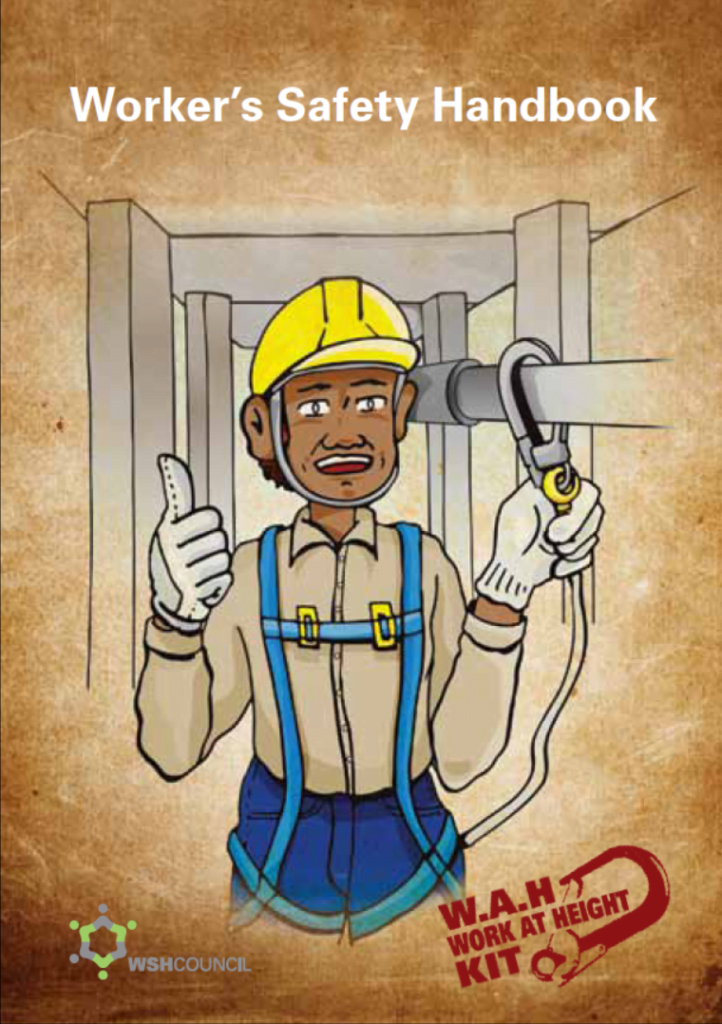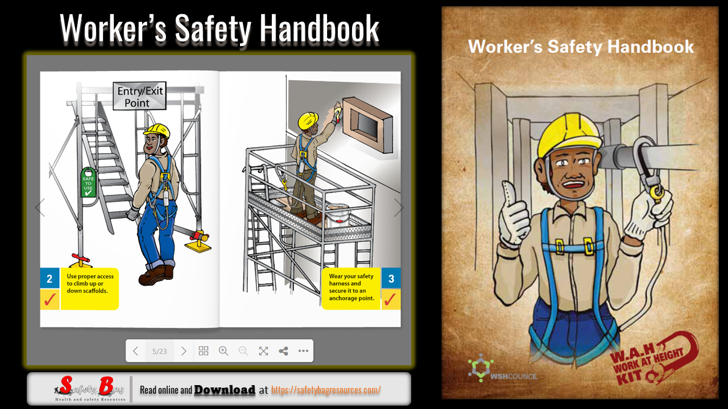
Employee safety refers to providing a safe working environment for employees by incorporating safe equipment and safe procedures at the workplace to ensure worker safety. Employee safety is important to maintain a good safe work environment to improve morale and efficiency, which in turn contribute to the growth and profitability of the company. Lack of safety procedures for employees could have legal and financial repercussions. Safety training, periodic safety inspections, and the provision of proper personal protective equipment (PPEs) are part of the employee safety mandate an organization must follow
Worker’s Safety Handbook Include 18 infographic about safe and unsafe work practices that should be followed at the workplace to ensure workers are working in safe conditions
Read the Worker’s Safety Handbook by Flipping the File below :
Also Read: Books: 5-Minute Workplace Safety Talks
Why is Employee Safety Important?
Facilitating a safe and healthy work environment is not just considered a measure to protect the workers from injury and illness; safety measures also lower injury/illness costs, reduce absenteeism and improve employee morale in the organization. Simply put, safety is good for business. Employee safety also has other benefits, including
- Improving employee retention
- Helping to remain OSHA compliant
- Creating a safe work environment to improve productivity
- Safeguarding the company’s reputation in the eyes of customers, competitors, and the general public
What Does Safety of Workers Mean?
Safety of workers refers to the provision of a safe environment, safe equipment, and safety procedures in the workplace in order to ensure workers’ health and safety. While organizations certainly have a moral obligation to ensure the safety of workers, an unsafe workplace can also have serious legal and financial consequences for employers.
Safety of workers may also be known as worker safety or occupational health and safety.
Workplaces are generally complex environments with competing and conflicting demands. That can make ensuring the safety of workers challenging. However, organizations that maintain a good health and safety environment for workers may increase employee morale and efficiency, which can ultimately contribute to the organization’s growth and profitability.
Workplace safety can be achieved by:
- Providing workers with safety training and instruction
- Providing workers with proper personal protective equipment
- Creating a safe working environment, safe equipment, and safe procedures that limit any threats to worker health and safety.
- Setting up adequate safety supervision
- Ensuring workers aren’t subject to extreme mental and physical fatigue
- Ensuring that the hours of work do not adversely affect worker safety and health
In addition to these duties, employers are also bound to comply with the organization’s safety policies and procedures and use safety equipment properly.
8 Safety Tips in the Workplace
There are certain work safety tips that can be followed by all employees to help create a safer work environment. Though the following tips are not the only ones out there, they illustrate key fundamental ideals to contribute to less risk on-site:
1. Always Report Unsafe Conditions
At times, workers can feel hesitant to share specific unsafe conditions and hazards with their superiors, in the fear of getting themself or someone else in trouble. This is not conducive to a safe work environment as it may increase the potential for an accident or injury to occur on-site. All members of the workforce must report unsafe conditions immediately to help protect their co-workers and themselves. Once a hazard or risk is identified, follow the proper procedure to inform key players to help mitigate risks quickly and effectively.
2. Keep a clean workstation
Employees should avoid any unnecessary items near or on their workstations. They must also always remember to clean their workstations from any spillages and thoroughly sanitize the area if shared with other co-workers. According to OSHA’s Fatal Four – Leading Causes of Fatalities in the Workplace, 36.5% of all workplace deaths are attributed to falls. In fact, slips, trips, and falls result in multiple workplace injuries every year, so remind employees to take this OSHA compliance safety tip seriously.
Also Read: Photo of the day: How to Avoid the Fatal Four
3. Wear protective equipment
Though this tip may seem obvious, it’s important to remind workers to always wear the necessary personal protective equipment (PPE). Oftentimes, workers may forget or choose not to wear a specific piece of equipment such as protective goggles or a hard hat, as they feel it may be unnecessary or that they can finish the task quickly without it. Personal protective equipment is assigned to keep workers safe and protect them from injury or illness, so always remind them to wear the proper PPE assigned for the task.
4. Take breaks
Employees who are tired and overworked are a liability on the worksite. Taking breaks is important to help workers rest and recharge before completing certain tasks. Tired team members may pose a risk as they are not able to fully focus on the task at hand, which could cause an incident or accident, potentially harming themselves or others.
5. Don’t skip steps
At times, workers may be in a rush to complete a task so they might skip steps to finish faster. They may also not use certain equipment or tools in the proper way to quickly get the job done. This must be avoided at all costs. Remind team members that procedures and workflows are carefully put in place to avoid any chance of risk, so the safest option is to follow them.
6. Stay up to date with new procedures or protocols
New procedures, protocols, or even equipment can be introduced to the workplace, so ensure workers are always aware and up to date with these new elements. Proper training and education must be provided to help workers understand what needs to be done to avoid a potential incident. Foster a culture of support and encourage workers to ask questions and speak to their supervisor if they need more help.
7. Maintain proper posture
It’s important to carry out job tasks with proper posture. From lifting heavy objects to even sitting at a computer, this safety tip is easy to forget when you are caught up in a task. Employees must keep proper posture in mind because it can help them avoid aches, pains, and potential long-term harm to their neck, back, or shoulders.
8. Offer guidance to new employees
Seasoned and experienced team members should always offer guidance to newer employees. Educating them on the organization’s safety culture and the standards it upholds is essential to keep a strong foundation of safety. If all team members are fully invested in the value that safety offers to not only the organization but themselves, they can work together to create a safe work environment and a stronger safety culture.
From reporting unsafe conditions to taking breaks, remind workers to always keep these work safety tips in mind to help ensure everyone gets home safely at the end of the day. It’s little steps like these that the workforce can carry out daily to help fortify the value of safety and the benefits it can offer.
Also Read: Photo of the day: Near-Miss Reporting and Posters
Download The Book
Booklets: Worker’s Safety Handbook
More Downloads
- Books: How to Plan for Workplace Emergencies and Evacuation
- Books: Firefighting Precautions at Facilities with Combustible Dust
- Books: A Guide to Electrical Safety
- Books: Preventing Falls in Scaffolding Operations
- Handbook: Worker’s Safety
- Books: A Guide to Safety in Confined Spaces
- Books: OSHA-Hazard communication for small Entity
- Books: OSHA-Permit Required Confined Spaces
- OSHA: Underground Construction (Tunneling)
- OSHA Recommended Practice of Health and Safety programs in construction
- Books: OSHA-Is it Safe to Enter Confined Space?
- Books: General Industry Digest
- Books: A Guide to Bloodborne Pathogens in the workplace
- Books: 5-Minute Workplace Safety Talks
- CAL/OSHA Scaffold Guide for safe use of supported Scaffolds
- Books: CAL/OSHA Pocket Guide for Construction Industry
- Books: Let’s Talk Safety
- Books: OSHA Fall Protection Toolbox Talks and Trainer Guide


